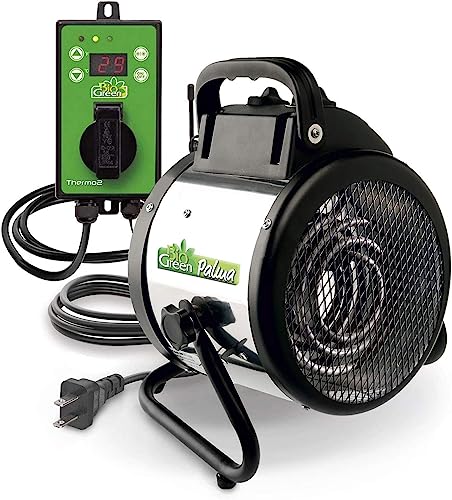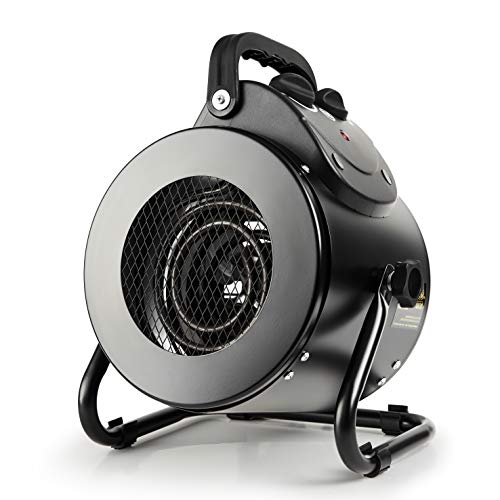Hello there, my name is Alex, and I’m excited to share my journey towards achieving year-round abundance through innovative greenhouse heating solutions. Growing up with a passion for sustainable agriculture and a deep-rooted connection to nature, I embarked on a mission to create an environment where plants thrive even during the coldest months. Guided by my commitment to eco-friendly practices, I delved into the world of greenhouse heaters, determined to find a solution that aligns with my values and aspirations. Join me as I unveil the strategies and insights that not only brought warmth to my plants but also warmed my heart with a sense of accomplishment and success. So, settle in and allow me to take you through the incredible transformation that has redefined the way I approach year-round cultivation.
The Challenges: Adapting to Greenhouse Heating Solutions for Year-Round Prosperity
Unpredictable Temperature Fluctuations: Alex grappled with the unpredictable nature of temperature shifts within the greenhouse environment. Sudden drops in temperature and unexpected spikes posed a constant threat to the well-being of the cultivated plants.
Seasonal Growth Limitations: Without effective greenhouse heating, Alex faced restricted opportunities for year-round cultivation. The limitations of the natural climate hindered the growth and development of plants outside their optimal seasons.
Stunted Plant Progress: Inadequate heating solutions resulted in slower growth and development rates for Alex’s plants. The absence of consistent warmth impacted not only their size but also their overall health and yield potential.
Delayed Crop Maturation: The lack of reliable greenhouse heaters caused delays in the maturation of crops. This delay had cascading effects on harvest schedules and the ability to bring fresh produce to market in a timely manner.
Pest Proliferation: In the absence of proper heating, the greenhouse environment became susceptible to pest infestations. The unregulated temperatures created favorable conditions for pests to thrive and jeopardized the entire crop yield.
Inefficient Resource Utilization: Without innovative heating solutions, Alex struggled with inefficiencies in resource utilization. Higher energy consumption and increased operational costs became a constant concern in maintaining the greenhouse environment.
Plant Vulnerability to Disease: The inconsistent temperatures resulting from the lack of effective greenhouse heaters made Alex’s plants more susceptible to various diseases. Weakened by temperature stress, the plants were less equipped to fend off pathogens.
Uneven Distribution of Warmth: The existing heating system in the greenhouse fell short in achieving uniform heat distribution. This led to areas with varying temperature levels, impacting the plants’ growth and creating an uneven growing environment.
Unfavorable Microclimates: Without proper heating, Alex struggled to create and maintain favorable microclimates within the greenhouse. This hindered the cultivation of plants with specific climate requirements, limiting the diversity of crops.
Restricted Crop Variety: The absence of suitable heating solutions constrained Alex’s ability to cultivate a wide variety of crops. Some plants that required warmer conditions for growth were simply not feasible to grow year-round.
The Solution: Revolutionizing Greenhouse Cultivation with Innovative Heater Strategies
Alex’s determination to conquer the challenges presented by the unpredictable greenhouse environment drove him to implement ingenious heater solutions. By devising and applying a range of strategic approaches, he not only addressed the existing hurdles but also transformed his greenhouse into a thriving hub for year-round plant cultivation.
1. Intelligent Climate Control System Implementation
Understanding the importance of consistent temperatures, Alex integrated a state-of-the-art climate control system within his greenhouse. This advanced technology utilized sensors to monitor temperature fluctuations in real-time. Based on the gathered data, the system autonomously adjusted the heaters, ensuring optimal warmth levels throughout the day and night. This innovation not only eliminated sudden temperature drops but also provided a nurturing environment for the plants to flourish.
2. Zoned Heating Network Creation
To overcome the challenge of uneven warmth distribution, Alex conceived a zoned heating network. By strategically placing heaters in specific zones, he achieved uniform heat coverage across the entire greenhouse. This meticulous arrangement eliminated cold spots and hot pockets, allowing every plant to receive the ideal amount of warmth. As a result, the plants’ growth became consistent and synchronized, contributing to their overall health and yield.
3. Hybrid Heating Solution for Energy Efficiency
Recognizing the significance of resource optimization, Alex introduced a hybrid heating approach. He combined traditional heating methods with renewable energy sources such as solar panels. During daylight hours, the solar panels captured energy from the sun, which was then channeled to power the greenhouse heaters. This not only reduced operational costs but also minimized the environmental impact. Alex’s innovative energy-conscious solution showcased his commitment to sustainability while ensuring a steady heat supply for the plants.
4. Pests Deterrence through Temperature Regulation
Alex’s determination to combat pest infestations led him to devise a unique strategy. By maintaining consistent and controlled temperatures, he created an environment that was less favorable for pest proliferation. The regulated warmth disrupted the breeding and survival patterns of pests, significantly reducing their presence. This proactive approach not only preserved the crop yield but also minimized the need for chemical interventions, aligning with Alex’s environmentally conscious mindset.
5. Micro-climate Customization for Crop Diversity
To address the challenge of cultivating diverse crops with specific climate requirements, Alex implemented micro climate customization. He strategically positioned heaters in different sections of the greenhouse, allowing him to create distinct climate zones. This flexibility enabled him to cultivate a wide range of plants, each thriving in its ideal conditions. Alex’s dedication to accommodating various crop varieties underscored his commitment to expanding his greenhouse’s offerings.
Through these innovative heater strategies, Alex not only conquered the challenges but also elevated his greenhouse’s potential for year-round prosperity. His hands-on approach, adaptability, and relentless pursuit of effective solutions have not only brought about transformation but have also positioned him as a pioneer in greenhouse cultivation.
Top 3 Amazon Best Sellers – Greenhouse Heaters
Learning from What Didn’t Work: Lessons from Alex’s Greenhouse Heater Journey
Alex’s quest to revolutionize greenhouse cultivation through innovative heater strategies was not without its setbacks. Along his path of exploration and experimentation, there were instances where certain approaches didn’t yield the desired outcomes. These experiences, however, served as invaluable lessons that guided him towards more effective solutions. Here are some key takeaways from what didn’t work:
1. Neglecting Plant-Specific Temperature Needs
Challenge: Initially, Alex implemented a one-size-fits-all approach to temperature control, assuming all his plants had similar requirements.
Outcome: This oversight led to suboptimal growth, as some plants struggled with either too much or too little warmth.
Lesson: Alex realized the importance of understanding each plant’s unique temperature preferences and tailoring the heating strategies accordingly to ensure healthy and robust growth.
2. Over-reliance on Automated Systems
Challenge: Alex heavily relied on automated climate control without monitoring the actual conditions inside the greenhouse.
Outcome: Inaccurate sensor readings and technical glitches resulted in improper adjustments, leading to temperature fluctuations.
Lesson: Alex learned that while automation is valuable, regular manual oversight and calibration are crucial to maintaining the accuracy and effectiveness of the system.
3. Ignoring Micro-climate Variations
Challenge: Alex assumed that uniform heater placement would suffice, disregarding the presence of microclimates within the greenhouse.
Outcome: Some areas received excess heat, while others remained comparatively cooler, causing uneven plant growth.
Lesson: Alex recognized the significance of accounting for microclimate variations and strategically positioning heaters to ensure consistent warmth across all sections of the greenhouse.
4. Underestimating Humidity’s Impact
Challenge: Alex focused solely on temperature control, neglecting the role of humidity in creating an optimal growing environment.
Outcome: Insufficient humidity levels hindered plant growth and vitality, particularly for moisture-loving species.
Lesson: Alex understood the interconnected nature of temperature and humidity, realizing that a well-balanced combination is essential for creating a thriving greenhouse ecosystem.
5. Lack of Emergency Heating Plan
Challenge: Alex didn’t have a backup heating plan in place for unexpected power outages or heater malfunctions.
Outcome: During an unforeseen power outage, the greenhouse temperature dropped rapidly, endangering his plants.
Lesson: Alex recognized the importance of having a contingency plan, such as alternative heating sources or insulation measures, to prevent potential crop loss in emergencies.
6. Disregarding Maintenance and Upkeep
Challenge: Alex overlooked routine maintenance of his heaters and climate control system, assuming they would function optimally without regular attention.
Outcome: Dust accumulation and wear-and-tear compromised the efficiency of his equipment, leading to inconsistent heating.
Lesson: Alex learned the significance of regular maintenance to ensure his heaters and climate control systems operate at peak performance, maintaining a stable environment for his plants.
7. Neglecting Energy-Efficient Practices
Challenge: In his pursuit of warmth, Alex sometimes kept heaters running even when they weren’t required.
Outcome: Excessive energy consumption not only escalated costs but also clashed with his commitment to sustainable practices.
Lesson: Alex embraced energy-efficient approaches, such as better timing of heating cycles and integrating renewable energy sources, aligning with his eco-conscious values.
In embracing these lessons, Alex showcased his resilience and willingness to adapt his greenhouse practices. Through these setbacks, he transformed failures into stepping stones toward success. His journey underscores the importance of learning from what doesn’t work, making adjustments, and continuously refining strategies. Alex’s story stands as a testament to the fact that setbacks are opportunities for growth and enlightenment, paving the way for more effective and successful greenhouse heater strategies.
Best Sellers on Amazon: – Greenhouse Heaters
Alex’s remarkable journey exemplifies the remarkable power of ingenuity and perseverance in revolutionizing greenhouse cultivation. From tackling the complexities of an unpredictable environment to implementing ingenious heater strategies, Alex’s relentless pursuit of innovative solutions has not only overcome challenges but also transformed his greenhouse into a haven of flourishing plants. Through the strategic integration of advanced climate control systems, zoned heating networks, hybrid energy approaches, and meticulous pest deterrent measures, Alex has elevated his cultivation space to new heights of productivity and sustainability. His dedication to creating customized microclimates for diverse crops further underscores his commitment to excellence. Alex’s story is an inspiring testament to the potential of hands-on innovation and adaptive thinking, positioning him as a trailblazer in the realm of greenhouse cultivation.

Alex Greenfield is a passionate horticulturist and skilled gardener based in the United States. With a deep-rooted love for nature and a lifelong fascination with plants, Alex has transformed their passion into a thriving profession. With over a decade of hands-on experience, Alex has honed their expertise in creating and maintaining vibrant, sustainable gardens that harmoniously blend aesthetics with ecological sensitivity.








